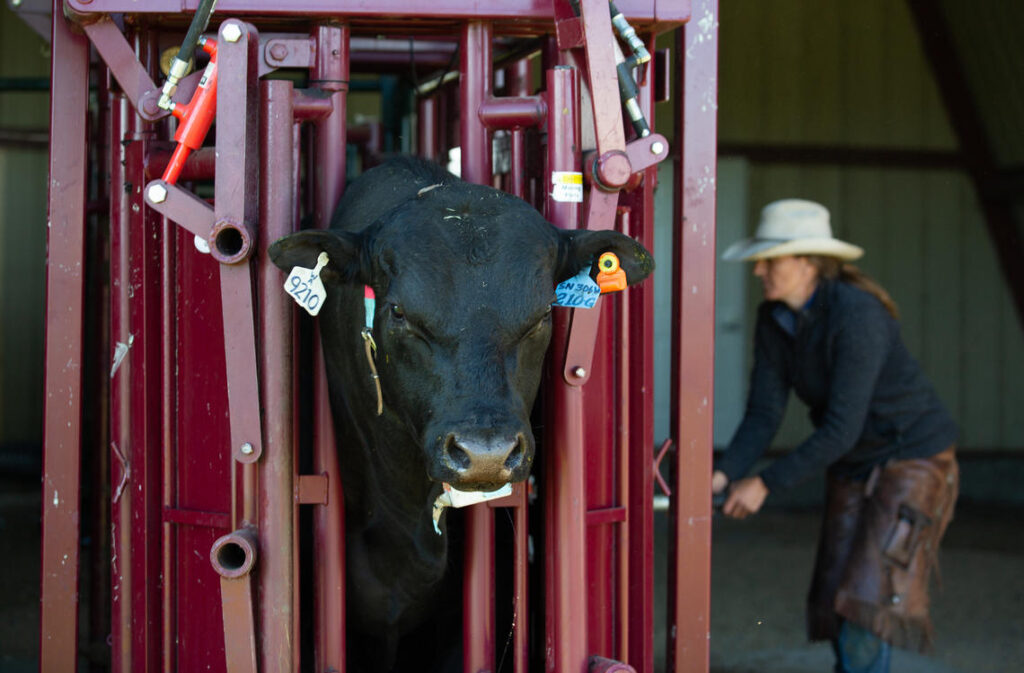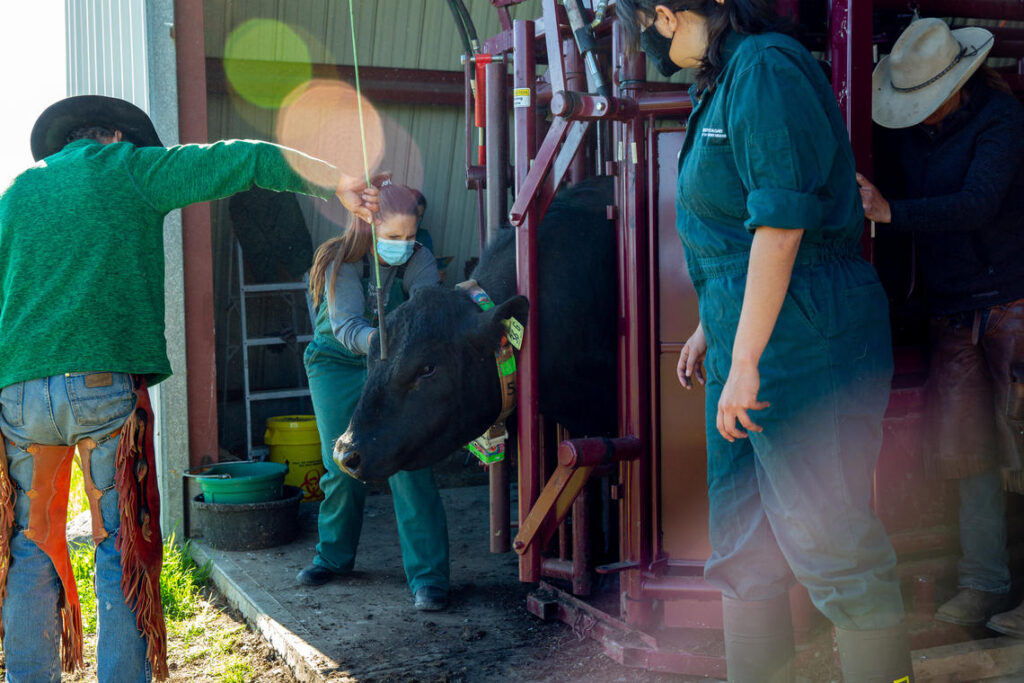What is it?
Chuteside diagnostics are tests that can be performed while the cattle are in the chute.
These rapid diagnostics tests typically use body fluid samples, such as blood, urine, or saliva to detect infections or diseases [1]. They typically provide fast and accurate results and are easy to use requiring little on-site equipment to perform.
Challenges
- For these chuteside diagnostic tests to be useful, they must take very little time to perform and get the results.
- These tests must be more inexpensive to perform than providing antimicrobials to the cattle to make the cost worthwhile to the operators.
- Rapid diagnostic tests are not always as accurate or as sensitive as standard laboratory testing.


How Does it Prevent AMR?
Rapid diagnostics allow for diseases to be detected earlier, allowing for steps to be taken to prevent the spread. The fewer animals that get sick, the fewer antimicrobials that are required.

A drop of blood is used to rapidly test the animal’s bovine respiratory disease risk.

Uses point-of-care metagenomic nanopore sequencing to detect common bovine respiratory disease pathogens.
Further Reading
Research Gaps
Product/Service Gaps
References
[1] R. K. Shanmugakani et al., ‘Current state of the art in rapid diagnostics for antimicrobial resistance’, Lab. Chip, vol. 20, no. 15, pp. 2607–2625, Jul. 2020, doi: 10.1039/D0LC00034E.

